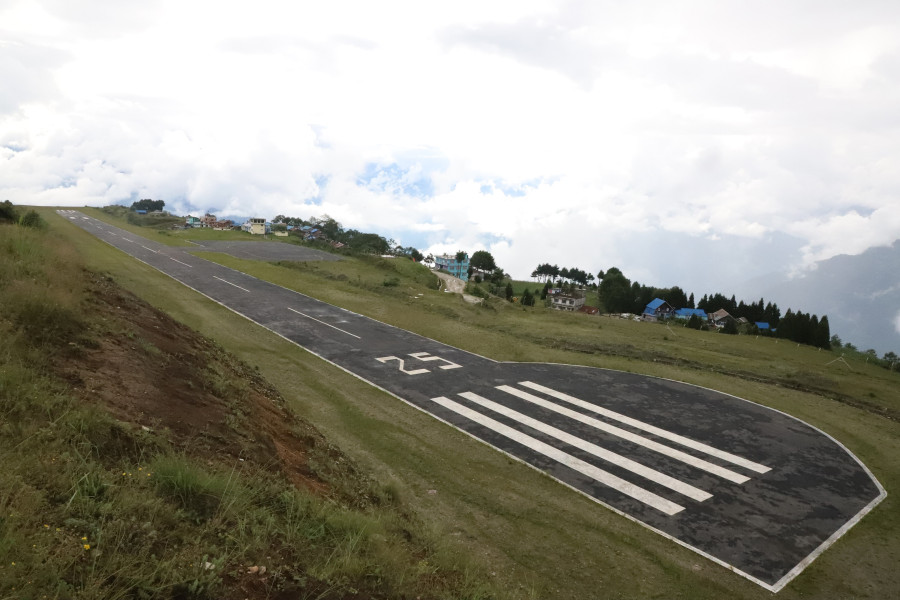Money
Europe's continued ban on Nepali airlines is unfair, civil aviation officials say
ICAO had given Nepal a score of 66 percent for effective implementation of safety standards—way above the global benchmark of 60 percent.
Sangam Prasain
The Civil Aviation Authority of Nepal on Sunday said it was unfair that the European Commission had maintained a ban on Nepali airlines for five consecutive years without considering the progress made in addressing the deficiencies in the safety oversight system.
In July 2017, the International Civil Aviation Organisation (ICAO) had removed the 'significant safety concerns' tag put on Nepal four years ago. In the audit, ICAO had given Nepal a score of 66 percent for effective implementation of safety standards—way above the global benchmark of 60 percent.
[Read: Nepal still on EU air safety list]
On December 5, 2013, the European Commission imposed a blanket ban on all airlines from Nepal from flying into the 28-nation bloc stating that Nepali carriers did not meet international safety standards.
“There is no reason why Nepal is still in the air safety list of the European Commission,” Rajan Pokhrel, director general of the Civil Aviation Authority of Nepal, told a press meeting following the 56th Conference of Directors General of Civil Aviation, Asia and Pacific Regions.
The five-day conference held in Nepal after two decades ended last Friday bringing 411 aviation officials from around the world including from the European safety agency.
Pokhrel said he met Patrick Ky, executive director of the European Aviation Safety Agency, and his team on the sidelines of the conference and held talks related to the progress made by Nepal in aviation safety and other safety issues.
“We informed the delegation that organisational reforms—splitting the Civil Aviation Authority of Nepal into a regulatory body and service provider to facilitate stringent enforcement of safety measures—were ongoing,” he said.
Pokhrel added that the European Commission, the executive branch of the European Union responsible for proposing legislation and implementing decisions, had expressed concern over helicopters crashing at an inordinate rate.
“Helicopter service is not the mainstream operation in Nepal. The operational requirements of choppers are different, and they are basically chartered for medical and emergency rescue operations where there is a risk,” he said, adding that putting commercial Nepali airlines in its bad book by comparing them with the chopper accident rate was unfair.
Helicopters in Nepal typically operate in challenging topography, and flights operated during inclement weather are particularly vulnerable.
Following the ban by the European Union on all Nepal-based airlines in 2013, the Civil Aviation Authority of Nepal introduced stringent measures to improve safety standards in all commercial and private airlines.
However, the tough actions failed to improve helicopter operations, and there have been two chopper mishaps this year. In February, a private helicopter crashed shortly after takeoff in Taplejung, killing seven people on board, including Tourism and Civil Aviation Minister Rabindra Adhikari.
At least 20 fatal helicopter crashes have taken place across the country since the civil aviation watchdog started keeping records in 1966. “There are crashes which need to be stopped. But helicopters have also rescued and saved more than 300 people, and most of them are foreigners,” said Pokhrel.
He said they also held a side meeting with the deputy administrator of the Civil Aviation Administration of China regarding access for Nepali airlines to airports in China. “We informed them clearly that despite having only one international airport, we have given permission to six Chinese carriers to operate here, and requested them to provide slots to Nepali carriers.”
The Chinese side said that they had given permission to a Nepali private carrier to operate flights to the new airport in Beijing, and would be conducting an audit of Nepal Airlines before it begins services to Guangzhou. “The Chinese side said that all countries conducted an audit before approving flights, and Nepal Airlines need not be scared of the audit as we are not concerned whether the European Commission has put Nepal in its air safety list,” said Pokhrel.
The Nepali side also held a meeting with the director general of the South Korean Civil Aviation Authority on matters related to safety and mutual cooperation. “The South Korean authorities said that conducting an audit of Nepal Airlines before granting landing permission was a regular and normal audit procedure,” said Pokhrel.
India has formally proposed to Nepal to allow it to conduct a feasibility study for the implementation of its advanced navigational satellite programme—GPS-Aided Geo Augmented Navigation (GAGAN)—which is expected to improve air traffic management on the Indian subcontinent.
The Airports Authority of India has provided a draft memorandum of understanding to Nepal seeking its consent to perform the feasibility study in order to take the GAGAN expansion programme forward for mutual benefit, said Pokhrel.
Nepal and Myanmar also agreed to hold talks to develop the Himalaya 2 airspace that has been pending for a long time due to lack of surveillance and communication system along parts of the route over Myanmar, officials said.
The Kathmandu-Bagdogra-Guwahati-Silchar-Imphal and Kunming air route is shorter, safer, more economical and efficient for flights between Europe-Middle East and East Asia. The proposed route will reduce congestion of westbound traffic flows across the Bay of Bengal.
“Overall, the conference was successful; and we hope to expedite and implement all the commitments made during the conference for the betterment of Nepal’s aviation industry,” said Pokhrel.
***
What do you think?
Dear reader, we’d like to hear from you. We regularly publish letters to the editor on contemporary issues or direct responses to something the Post has recently published. Please send your letters to [email protected] with "Letter to the Editor" in the subject line. Please include your name, location, and a contact address so one of our editors can reach out to you.




 16.12°C Kathmandu
16.12°C Kathmandu















